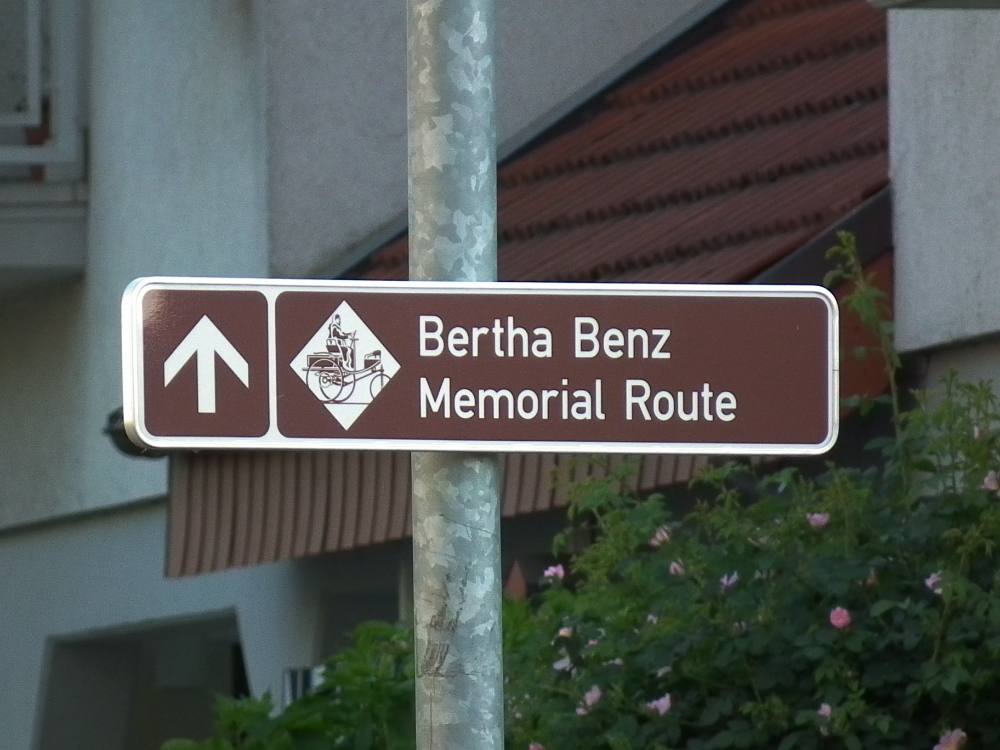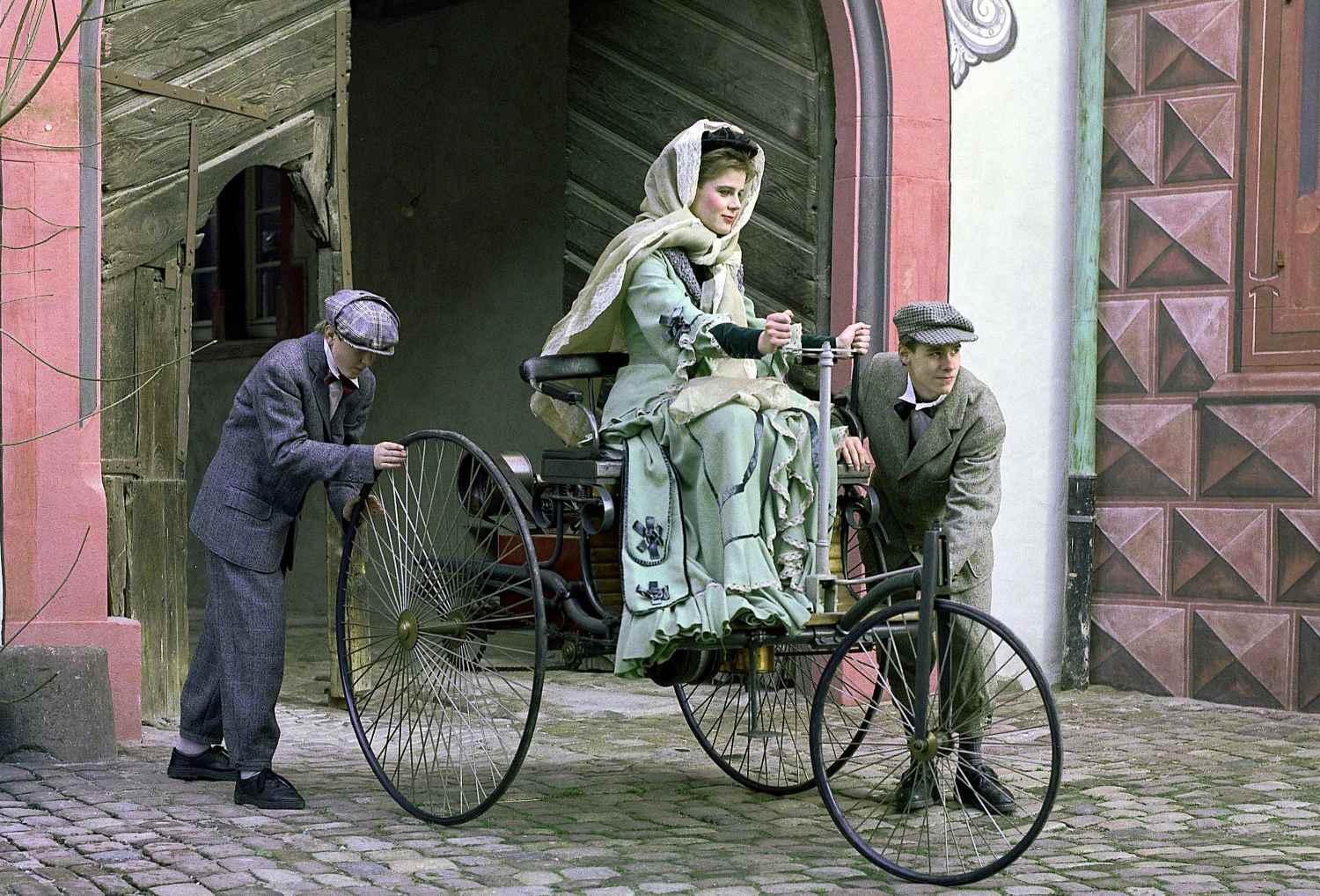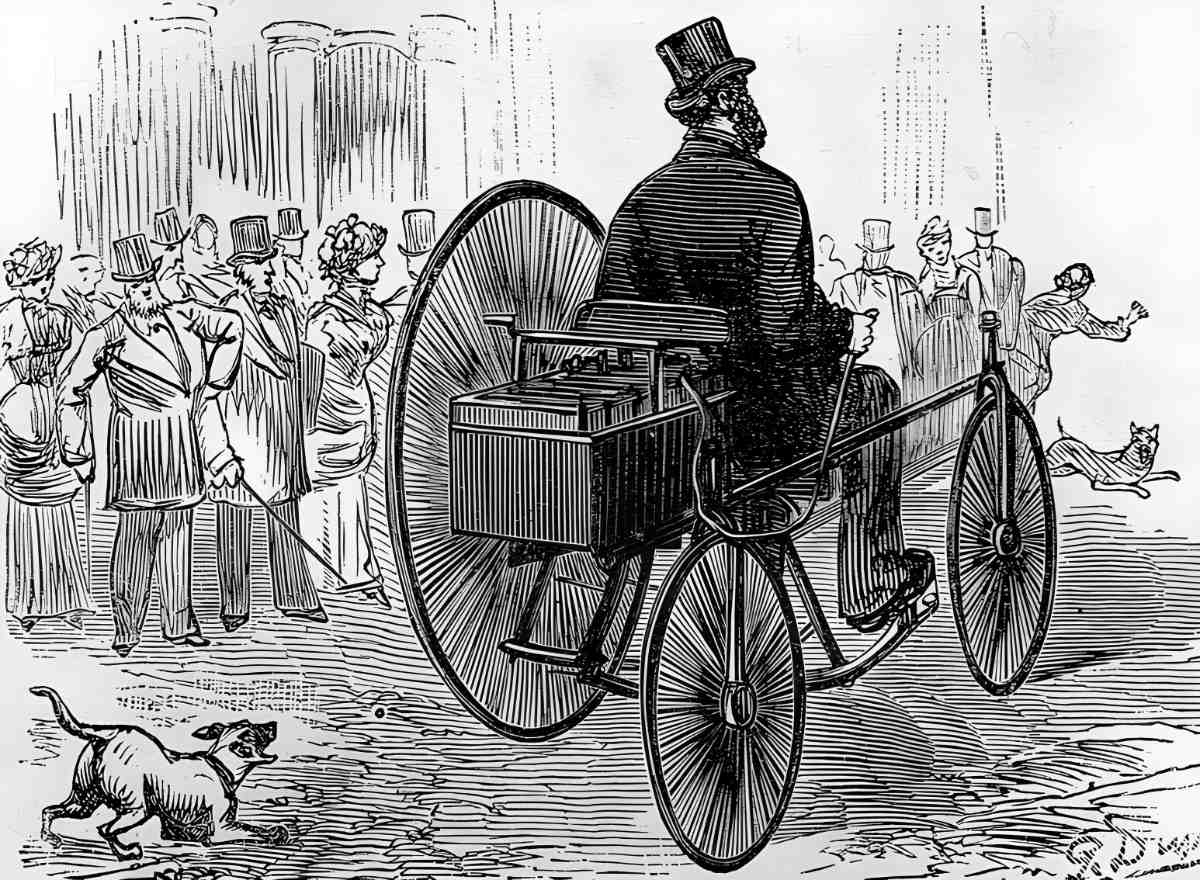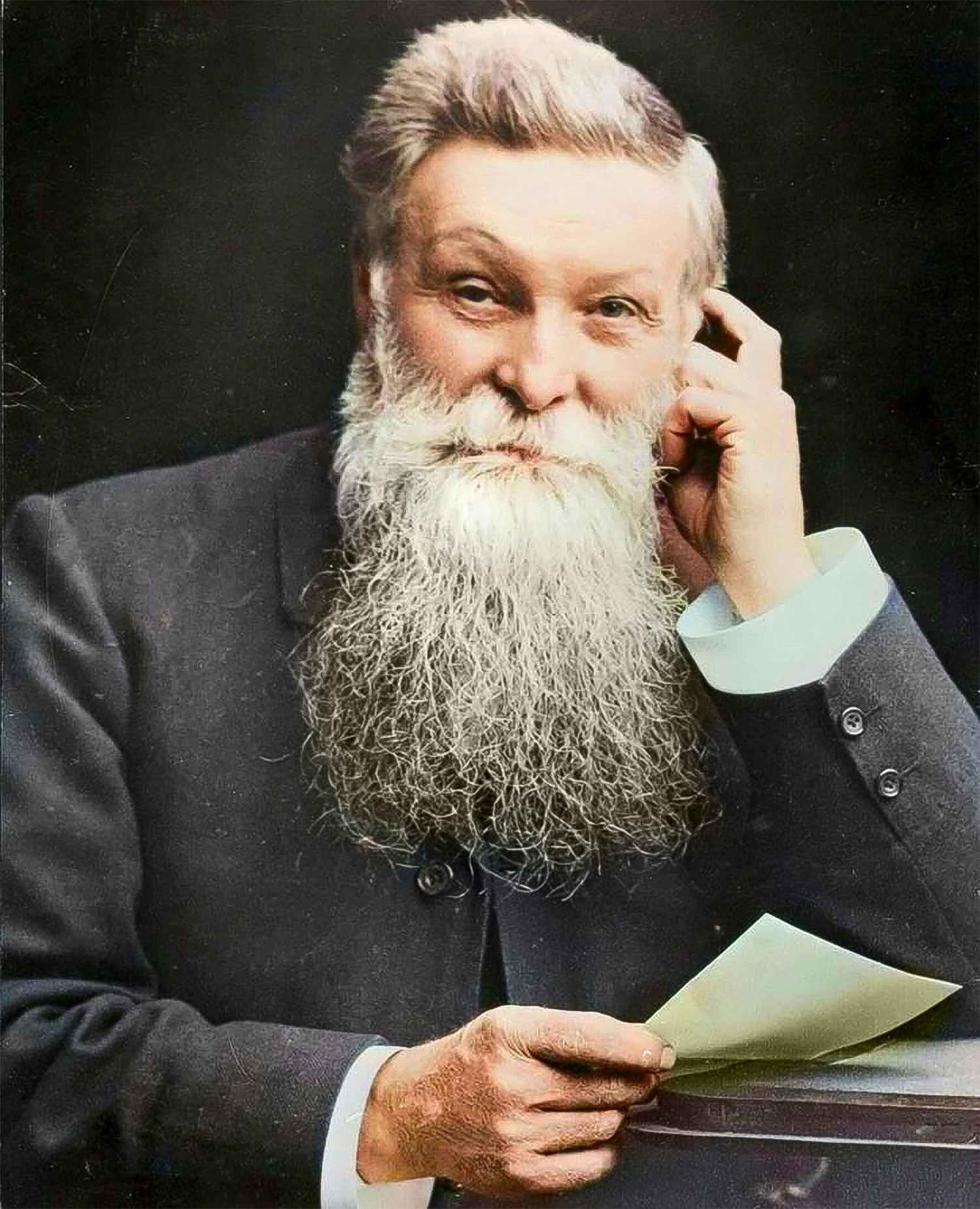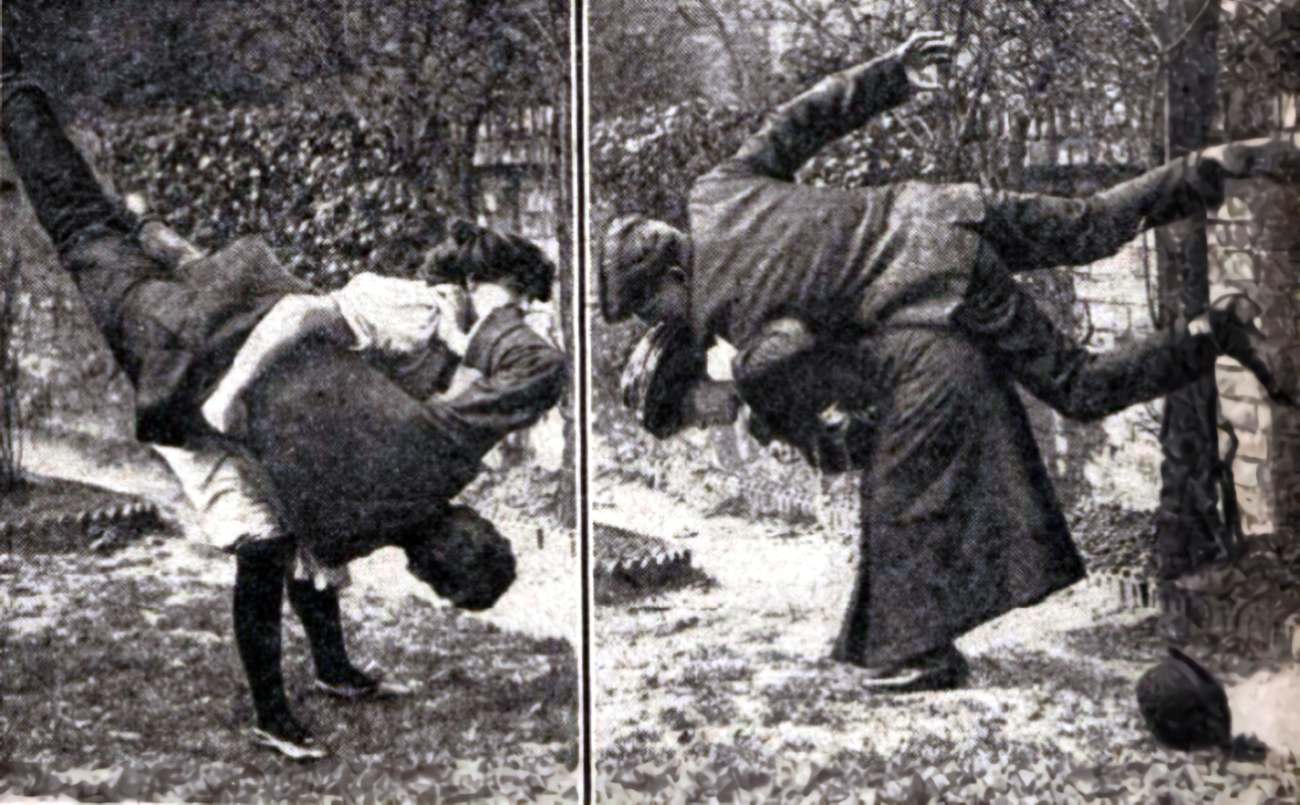She fixed the car with a hairpin and a garter and got gas from pharmacies. Bertha Benz, Karl Benz’s wife, drove the first cross-country car trip with their newly developed automobile in 1888. It was quite the ordeal, what with the nighttime fog and everything. Also, there was the risk of law enforcement, for the simple reason that what Bertha Benz was doing was dangerous and strictly illegal.
When writing his memoirs in the autumn of 1885, Karl Benz was already certain that his motor vehicle was more than just an abstract concept with no real-world significance. The “Satan’s vehicle,” as its detractors dubbed it, traveled for kilometers with ease at speeds of up to 12.5 miles (20 km) per hour. To protect his idea, Benz filed for a patent. The patent was received by him on January 29, 1886.
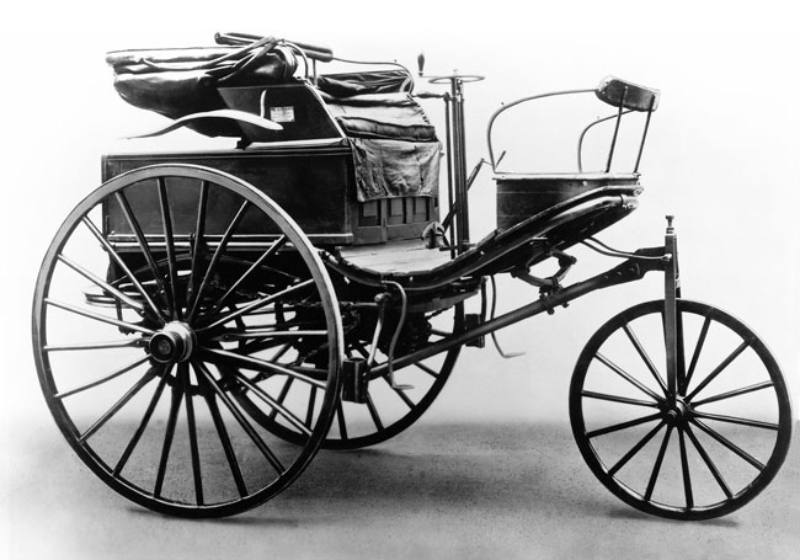
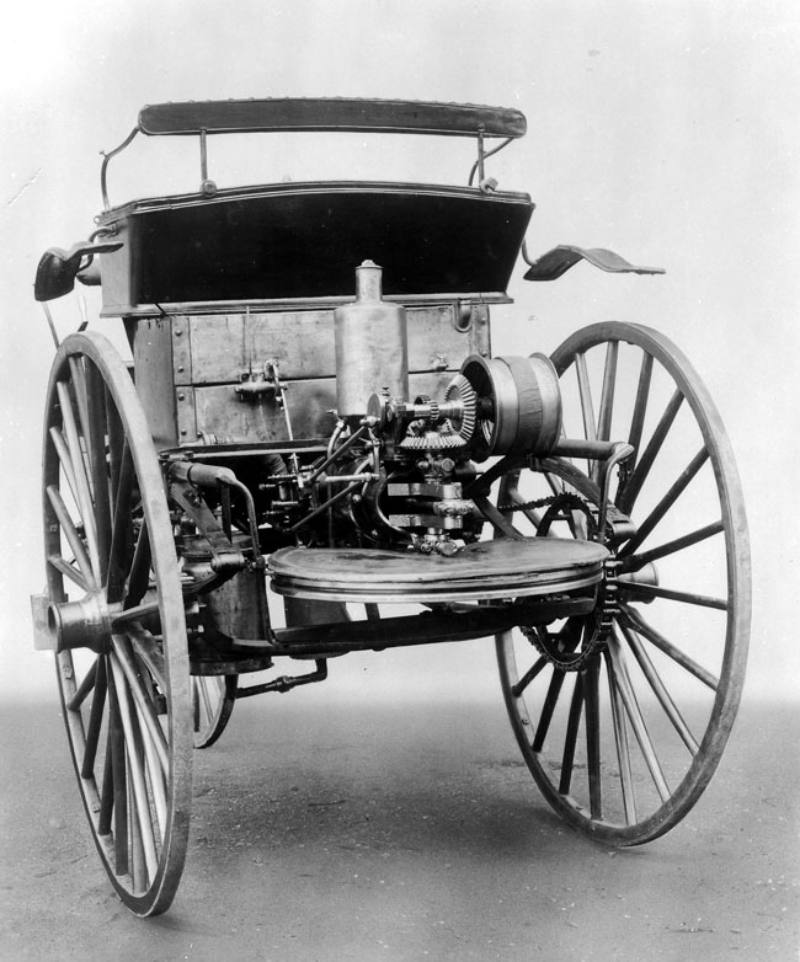
Almost overnight, the “horseless carriage” gained widespread attention. There was little question that this motorized velocipede would quickly amass a large fan base. However, the detractors’ opinions were more widely heard. They called the gasoline automobile a joke and insisted that the road should be reserved for horses.
There were just no takers for the three-wheeled motor vehicle. The expected growth in the economy never happened. At this point, Karl Benz was ready to throw in the towel for good: “Now I realized that I was at the bottom, at the very bottom, and had to knock like a beggar at the doors of humanity and its culture.”
Bertha Benz, his wife, had had enough of waiting around. She was confident in the future of the “self-propelled vehicle” and set out to show its viability to everyone, even her cynical husband. But he was unaware of Bertha’s intentions. He was too timid to take such a risk, and there was no way Karl would have approved it. Early in the morning of August 1, 1888, Bertha and her two boys, Richard and Eugen, together with the automobile, vanished.
Time to leave

Bertha Benz, then 39 years old, became the first person to drive an automobile for a long distance on August 5, 1888, when she and her sons Richard, then 13, and Eugen, then 15, traveled from Mannheim to Pforzheim in a Model III without informing her husband or obtaining permission from the authorities.
They had quietly left on the very first cross-country car journey in the history of the automobile. An unexpected window of opportunity had presented itself. Sister Bertha Benz of Pforzheim, Germany, had just given birth. Bertha Benz was keen on paying her a visit. When you could just get in your self-propelled car and head on the road, there was no use in taking the train. Immediately, her boys set off on the reckless journey that would make Bertha Benz famous. As she later reflected on her life, “I was probably the first woman driver in the world.”
When they finally got the vehicle onto the road at night, they still had around 60 miles (100 km) to go. The beginning was rocky. The automobile wouldn’t start until the third try. Sighing with relief, the trio settled into the driver’s seat and sped out into the semidarkness, giddy with anticipation. That was the furthest distance any automobile had ever traveled in the history of cars. It was possible that they just wouldn’t make the 66-mile (106-km) trip. The car was not expected to last on such a long-distance trip.
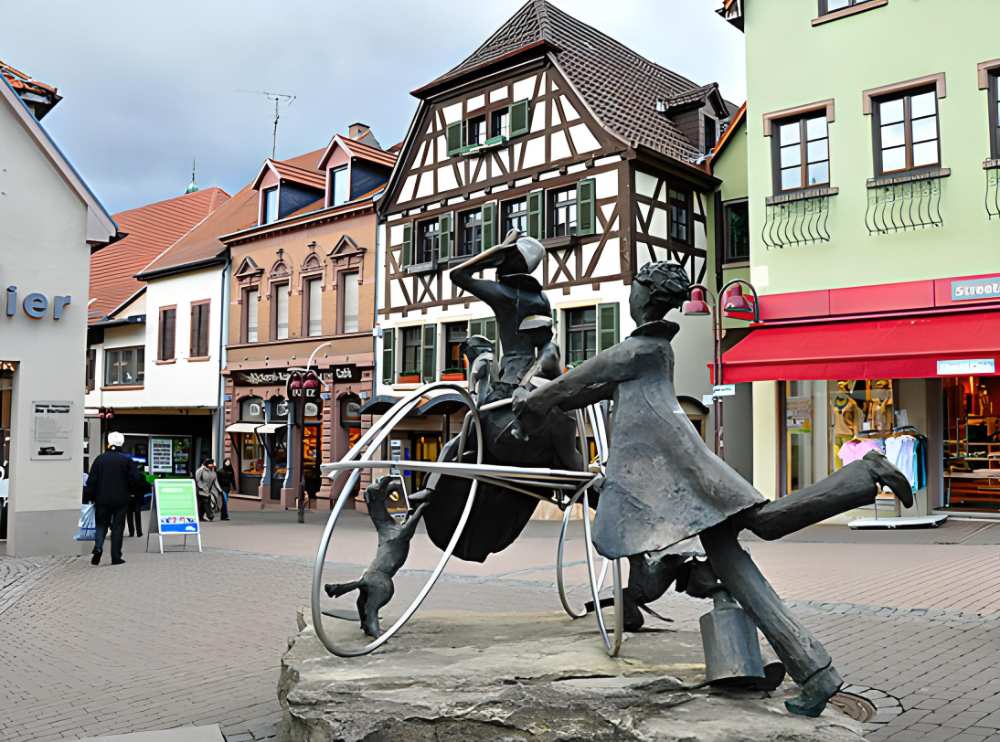
Also, there was the risk of law enforcement being able to prevent them since what they were undertaking was illegal. The authorities had maintained a close eye on Karl Benz to ensure that he adhered to the terms of his driving permits and only tested his motorcars on designated roads and at certain hours.
The vehicle was restricted from leaving the city limits of Mannheim. For good reason too, since many incidents might have been avoided if the horses hadn’t been so afraid of this clattering, smelling monster of a car. The factory gate was guarded 24 hours a day by the police to prevent any unauthorized exits.
Prior to this landmark journey, motorized drives were often trial runs of a few miles that ended back where they started. This adventurous journey, taken in one direction over wagon tracks, spanned a total distance of around 106 kilometers (66 mi).
The world’s first gas station
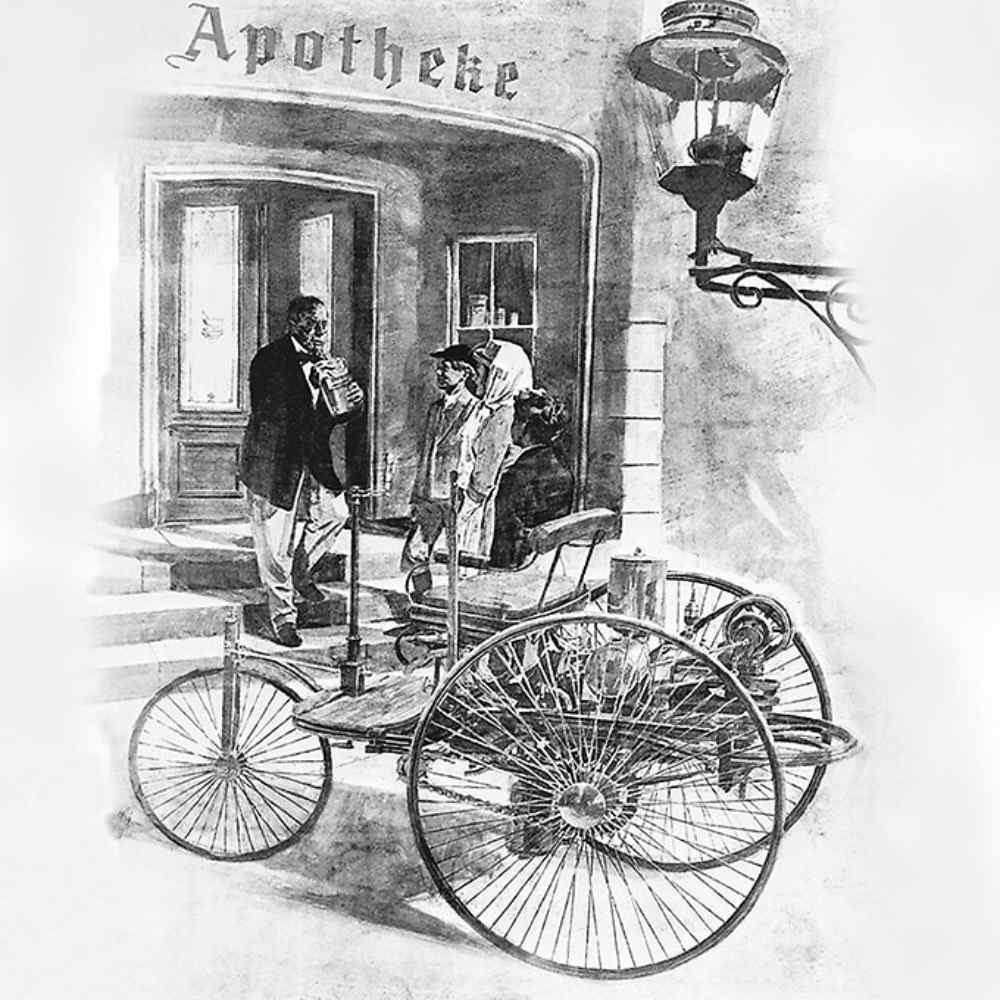
After just a short distance, though, the first difficulties began to surface. White clouds of steam were billowing out of the copper water tank above the cylinder. There was an immediate demand for cooling water. Bertha Benz and her boys located a well and refilled their water supplies. Then, not far from Wiesloch, they had emptied the gas tank.
Apparently, Karl Benz hadn’t realized how enduring his car would be. The residents of Wiesloch circled the car out of curiosity. One kid approached Bertha Benz and said, “Are you part of the vanguard of a circus?” A greengrocer cried out, “Holy sandbag!” “There’s a woman above!” One of them asked if they had lost their horses.
Despite all the comments, mom and the boys kept their cool. They were perplexed at the empty tank. Then they came up with a fantastic plan. The car’s fuel, Ligroin, was also offered as a cleaning product in drugstores. As a result, they pushed the vehicle to the Wiesloch drugstore. The proprietor was taken aback, but he sold the adventurers all of his Ligroin nevertheless, making him the world’s first gas station attendant.
Mother and sons, taking turns driving, traveled several miles between water sources and drugstores. And every time they tried to use it, they had problems with the technical aspects. However, every issue had been resolved. The automobile stopped working shortly after Weingarten due to a congested fuel supply. Bertha Benz quickly removed her hat pin, inserted it into the clogged hose, and the obstruction was removed. The “horseless carriage” had another breakdown near Söllingen. The short circuit was produced by a cable that had worn through. Instead of just letting the insulation fall apart, Bertha Benz replaced it by using her garter.
Dirty with oil but proud about it

The next unforeseen difficulty arose not far behind Wilferdingen. The combustion engine car’s meager 2.5 horsepower rendered it unable to scale the steep inclines. This hill was ironically called “See You For.” To get the car up the hill, they pooled their efforts and then raced down it at breakneck speed since the brakes weren’t made for such speed. As Bertha Benz acknowledged, they were lucky to escape any harm.
Oily, dusty, and perspiring, the three explorers arrived in Pforzheim’s central square after midnight. Bertha Benz sent the unknowing Karl a telegram that said, “Happily arrived in Pforzheim.” His anger at the “plot of the three family members” was too much for him to process at once. As Karl’s memoirs reveal, “after the initial shock,” he felt “a secret pride.”
Despite popular belief, Bertha Benz’s first long-distance car journey did not get the massive amount of media attention that she hoped for. But it spurred Karl Benz on to greater things and is now seen as a crucial step on the road to commercial success for his revolutionary motorcars. A few weeks later, Karl Benz unveiled the automobile at the Motor and Working Machines Exhibition in Munich, where it won the prestigious “Great Golden Medal.”
25 Benz automobiles were sold between 1886 and 1894, with the majority going to the countries of France, England, and the United States. By 1899, Benz & Cie had grown to employ over 430 people and was making four-wheeled automobiles in large quantities.
